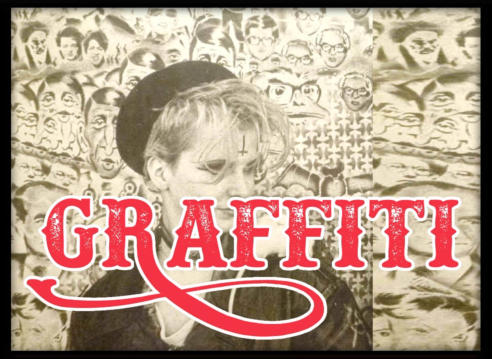
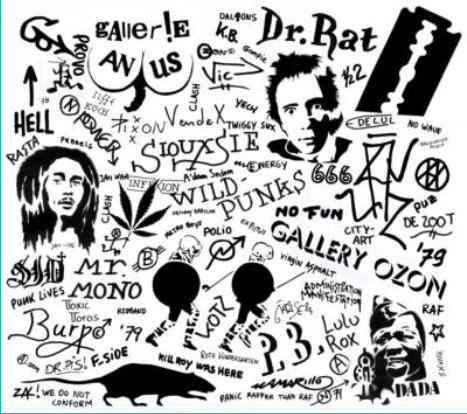
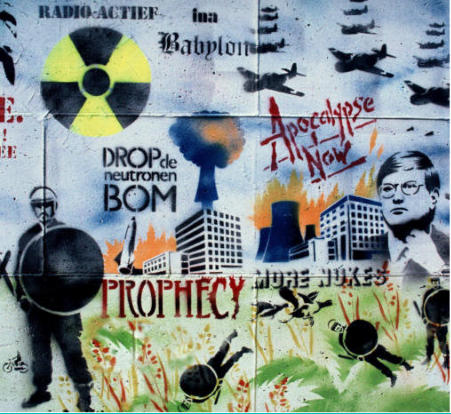
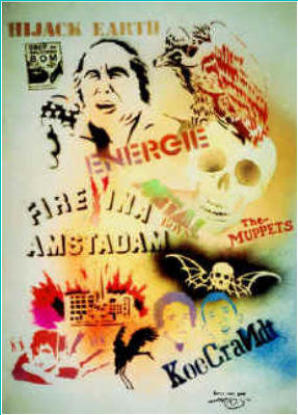
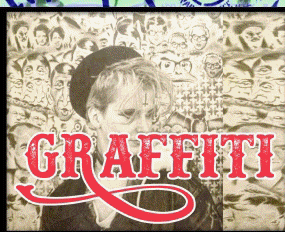
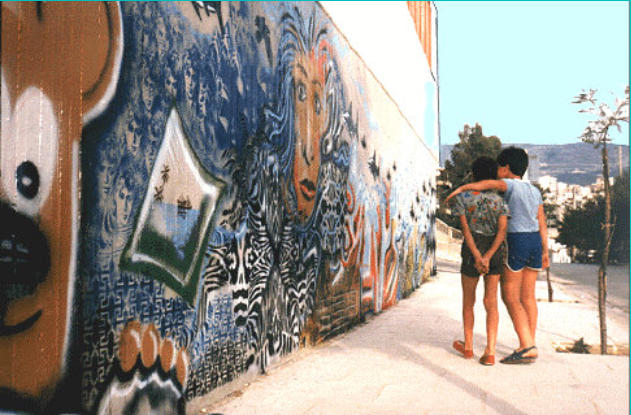
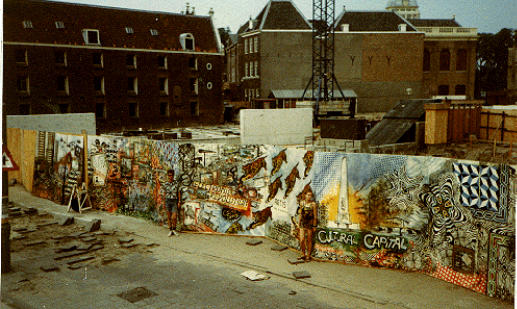

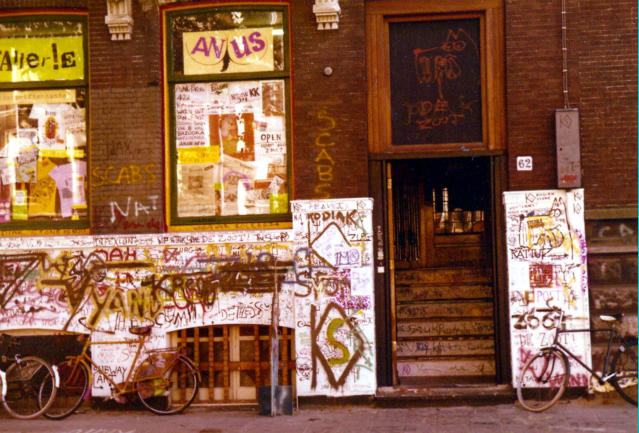
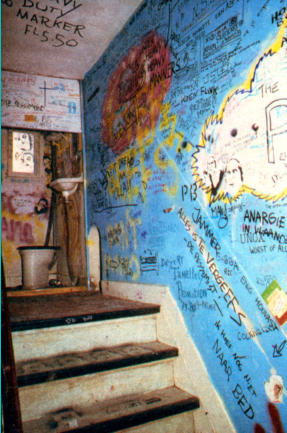
1. The word ‘graffiti’ derives from the ancient Greek (yrafo, meaning ‘to write’) and from Latin (graffito, ‘scratch’). It is commonly understood to mean writing
on walls. There is no typical demographic for writers. While graffiti is often done by teenagers, there is evidence that writers with an aptitude for the activity
will continue the activity into their twenties and thirties.
2. In the last three decades, graffiti has come to be regarded as a social problem because of the costs of graffiti management, graffiti and fear of crime,
graffiti and social decline and the risks to graffiti writers.
1. Graffiti is an issue of great significance to local communities, local government, police, public transport agencies and young people. Individuals within
these groups can be affected in various ways by graffiti. While some see it as an index of social decline and youth criminality others find pleasure in the
expression and find its results attractive.
WHAT IS GRAFFITI?
3. Graffiti is not a unitary, homogeneous phenomenon. The term ‘graffiti’ refers to an activity which has a long history and which has taken various forms. The
word ‘graffiti’ derives from the ancient Greek (yrafo, meaning ‘to write’) and from Latin (graffito, ‘scratch’). It is commonly understood to mean writing on
walls. Graffiti was practiced in both ancient Greece and Rome (examples have been found at Pompeii and Herculaneum), and was also common in the early
modern, medieval and Elizabethan periods. In contemporary times, graffiti takes a number of forms including hip hop, political graffiti, and stenciling.
Hip Hop Graffiti
4. Hip hop graffiti includes the most common and most visible forms of contemporary graffiti: ‘tags’, ‘throw-ups’ and ‘pieces’. Each of these centres on a
stylized form of the writer’s chosen graffiti name (his or her ‘tag’), which constitutes a kind of identity for the author within graffiti culture. A tag name will have
been chosen for its combination of particular letters (which the author finds pleasurable to write, and which s/he thinks will look impressive to other writers)
and for its evocation of a kind of ‘street’ sensibility. Thus examples of tags include ‘Phake’, ‘Meta4’, ‘Optic’, ‘Yeha’, and so on.
5. ‘Tagging’ is the name given to the writing of this name in a calligraphic style which looks to those outside hip hop culture like ‘scribble’ or ‘scrawl’. In fact it
is an activity which can take weeks or months to perfect, although only those inside graffiti culture tend to find it pleasing to the eye. Tags can be written or
etched very quickly, on almost any surface (e.g. walls, park benches, glass, cars, train seats, pavements, signal boxes), and with a variety of implements
(pens, spray cans, keys, coins). ‘Throw-ups’ are a simplified version of a tag, written in bubble-style letters, usually spray-painted with one or two colours.
They can also be executed very quickly (hence the name: the letters are ‘thrown-up’ onto a wall in about 30 seconds). A ‘piece’ is a large, mural-style
rendering of the writer’s tag name, often using several colours and incorporating images into the design. A ‘piece’ usually takes a number of hours or days to
complete and can sometimes be the work of several writers.
6. Hip hop graffiti originated in the United States in the late 1960s (see Austin; Macdonald; Chalfant and Prigoff). Individuals known as ‘Top Cat’ and
Cornbread’ in Philadelphia are usually credited as the first to write their tags on walls and on public transport; in New York City the first writers to become
famous were Julio 204 and Taki 183. The subway system in New York became the main location for this form of graffiti writing until concerted regulatory
efforts (cleaning, prosecution of those caught) were made. The subway system is now often cited as ‘graffiti free’: however, two caveats should be noted.
First, graffiti did not disappear from the city; it was greatly reduced on the subway trains and expanded into the streets as a result. In New York, graffiti can
be seen on mailboxes, newsstands, walls, doors, security shutters, lampposts and phone booths. Second, the strenuous efforts to clean painted graffiti from
the trains led to the evolution of a new form of graffiti, whereby a key or coin is used to etch or scratch a tag onto a smooth surface. Transport companies in
New York are now facing extensive costs from replacing train windows which have been heavily etched with tags.
7. Tags, throw-ups and pieces derive from hip hop culture more generally. Hip hop culture has a strong ‘grass roots’ dimension, emphasizing the ordinary
individual’s abilities to make music, art or dance. It includes, in addition to graffiti, breakdancing (prevalent in the 1980s and making a comeback in
popularity), emcee-ing or DJ-ing, and skateboarding. It has also become associated with hip hop or rap music, such that music videos often feature heavily
graffiti-ed backgrounds. Advertising targeted at young people often makes use of graffiti in selling products such as mobile phones, shoes, clothing, soft
drinks, and so on. Given the immense popularity of hip hop culture generally with young people today, it is important to realize that hip hop graffiti is likely to
be prevalent for some time to come.
Political Graffiti
8. Political graffiti commonly involves the writing of a word or phrase in the public sphere. The writer’s aim is usually to have their message seen and read by
people; thus, slogans are written in a legible style and locations selected are usually areas of considerable visibility. Some slogans are simply personal in
nature, such as ‘Sally loves Ted’. Most, however, engage with current affairs, national events, and issues of public concern, much as a newspaper does.
Indeed, slogan writers (in interviews with the author of this Strategy) state that they usually became involved in slogan writing because of frustration with the
limitations of the mainstream media (such as talkback radio or writing letters to a newspaper) as an outlet for their views. Issues covered by slogan writers in
recent years within the City of Melbourne include environmental concerns, feminist issues, state politics, international relations, with the most common being
anti-war and anti-globalization slogans. All share the common feature of being declaratory or exhortative in nature, expressing a view to an audience.
Stencils
11. Stencils have become an extremely popular form of graffiti in recent years, particularly in cities such as Paris, London and Melbourne. The work of
stencillers such as Banksy and Nylon (based in Britain) and Blek and Miss-Tic (based in Paris) has been exhibited and collected in books and on websites.
In Melbourne, some of the most prolific stencillers working within the municipality include Ha Ha, Sync and Optic. To make a stencil, an image is created
(often using a computer program such as Adobe Photoshop) and translated into a cardboard template which can be placed flat against a wall or other
surface and sprayed, to leave behind the stenciled image. Stencils range from the highly political through the allusive to the whimsical. They are highly
reproducible, by their very nature: when a stencil is painted out, the stenciller need only return later with the template to replace the erased image.
12. Stencillers combine some of the communicative aspects of slogan writing with elements of the autonomous culture of hip hop graffiti. British art critic
Tristan Manco, who has published several books on stenciling, writes that: “stencils are more self-conscious than the spontaneous tagged graffiti messages
or the coded confidence of hip hop style. A stencillist will have a location in mind for both aesthetic reasons and for an audience. Generally the artists have
an affinity with the place they choose, they know its aspect and have considered its qualities of colour, shape and surface. Other stencillists pick locations for
their associations… Fashionable districts are also popular sites for art-based stencils since they will be seen by young people, the media, and perhaps
galleries” (2002).
13. Some local stencillers see it as a way to communicate a political view (like slogan writing). Others state their aim as ‘making people smile’ or ‘giving them
a laugh’ while walking through the city. Stencilling has become significant in Melbourne in recent years.
62. Creating and supporting areas of higher tolerance in which high quality street art can exist, is also recognition of the cultural significance that street art
has for today’s young people. These areas will be allowed as much as possible to ‘selfregulate’

